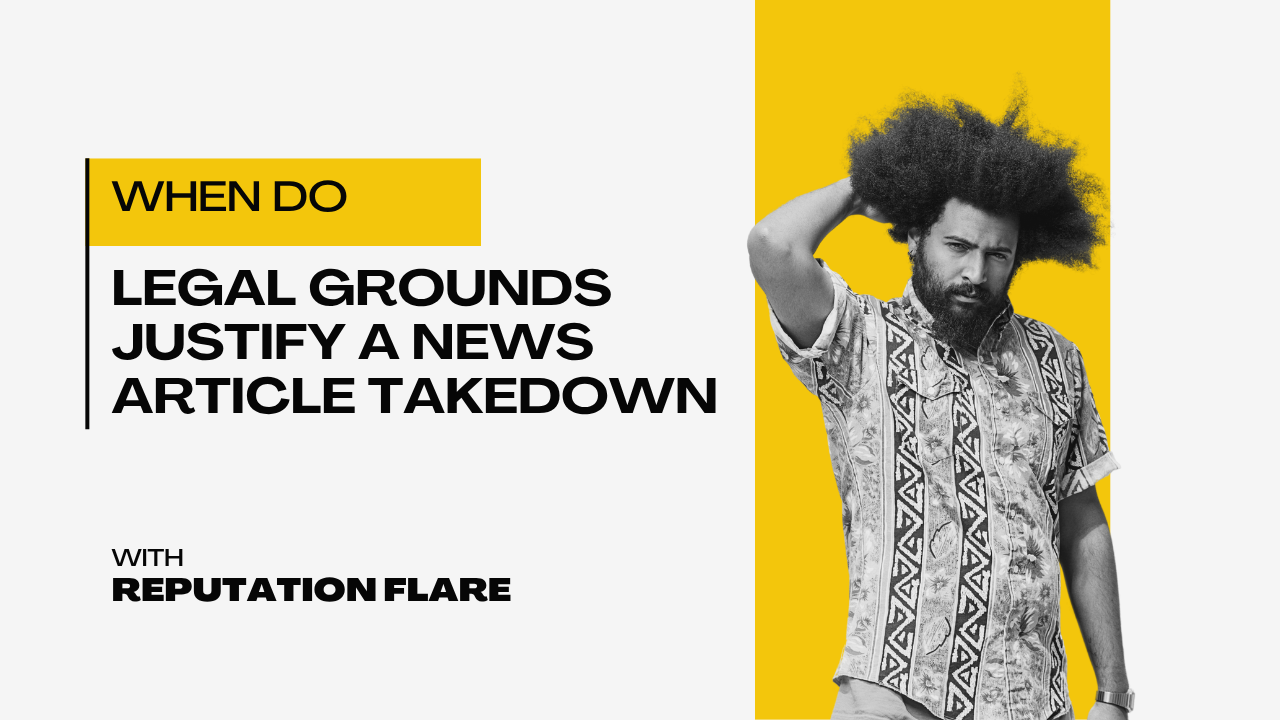Not all bad press can be deleted, but in the right legal context, you can get a news article removed. So what actually qualifies?
Here are the most common legal grounds that can justify a takedown request—especially when removal from the publisher or search engine is your goal.
Learn More: How to Remove a News Article from Google
1. Defamation (False and Harmful Content)
If the article contains false statements presented as fact that damage your reputation, it may be considered defamatory.
To qualify:
- The statement must be provably false (not just misleading or one-sided)
- It must be published to others
- It must cause reputational or financial harm
This is one of the most common legal arguments used in content takedown cases. But it often requires legal action or strong documentation to back it up.
2. Invasion of Privacy
Privacy laws can be used to challenge articles that expose sensitive personal information without a legitimate public interest.
Examples that might qualify:
- Publishing home addresses, phone numbers, or financial records
- Reporting on private matters (e.g. medical info, sexual orientation) without consent
- Sharing content that puts someone at risk of harassment or harm
This is especially relevant in cases involving minors or non-public figures.
3. Outdated or Expunged Criminal Records
In some jurisdictions, if charges were dropped or records were expunged, the continued presence of a news article may be seen as misleading or harmful. While the U.S. does not have a blanket “Right to Be Forgotten” like the EU, you can still request removal based on:
- Inaccurate reporting
- Public harm
- Privacy violations tied to sealed court records
Google has accepted removals in these cases through its Legal Removal Request process.
4. Copyright Infringement
If the article contains copyrighted content—like your photos, written material, or other intellectual property—you can issue a takedown under the DMCA (Digital Millennium Copyright Act).
What qualifies:
- Unlicensed use of your original creative work
- Photos or videos you own the rights to
- Published material lifted from your website or platform
This is one of the few “cut and dry” methods that doesn’t require proving harm—just ownership.
5. Court Orders and Legal Agreements
If you’ve secured a court order, settlement, or legal agreement requiring content to be taken down, that can be enforced.
For example:
- Civil judgments related to defamation or harassment
- Sealed case rulings
- NDA or settlement clauses that require content removal
These situations are rare but very effective—especially when backed by a judge’s signature.
Final Thought
Most news sites won’t remove articles unless there’s a clear legal reason. If you believe an article violates your rights or contains false, harmful content, understanding your legal grounds is the first step.
Still unsure where you stand?
At Reputation Flare, we assess your options and help build the case for removal—without upfront fees. Get a Free Quote and let’s see if your article qualifies.

